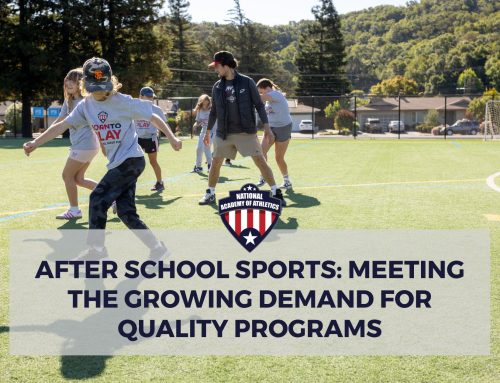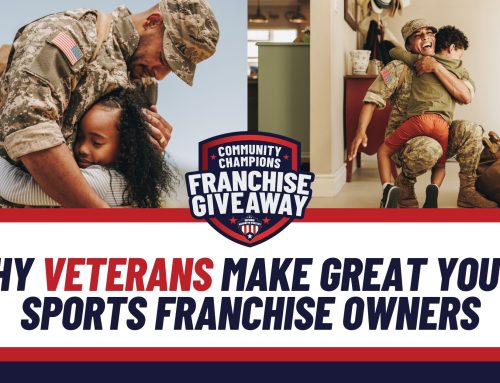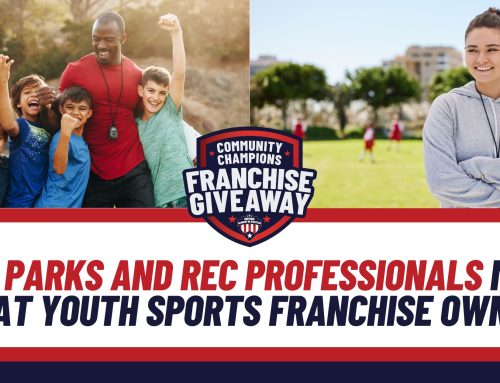Reclaiming Recreation: How Municipalities Can Lead the Movement to Bring Back Youth Sports for All
By: Aaron Locks, NAofA Founder & CEO
Youth sports are at a crossroads. Competitive clubs provide valuable opportunities, but the system is unbalanced. Kids are pushed to specialize too early. Families are priced out. And the simple joy of playing is disappearing. Communities are left with fewer accessible options, and children are missing out on the lifelong benefits sports provide.
I’ve spent four decades, my entire adult life, working in youth sports. When my father left at age three, sports weren’t just a pastime; they were my lifeline. Fields, courts, and gyms gave me mentorship, structure, and joy. They shaped me as an athlete, coach, father of two, and now grandfather. I’ve seen firsthand how recreational leagues can transform lives by creating lasting friendships, confidence, and resilience.
Today, we face a crisis. Kids are quitting sports at alarming rates, often before middle school. According to Aspen Institute’s Project Play, the average child quits by age 11, most often because “it’s not fun anymore.” In 2008, 45% of kids ages 6–12 played team sports regularly. By 2018, that number had dropped to 38%, according to SFIA data highlighted by ESPN. Behind those statistics are millions of kids losing access to lessons, friendships, and growth opportunities that only sports provide.
The economic stakes are massive. Families now spend an estimated $30–40 billion annually on youth sports, yet accessibility continues to shrink. Participation gaps are striking: only about 34% of children from households under $25,000 play sports, compared to 69% from households earning $100,000 or more. Parks and Recreation departments, long the backbone of accessible play, are underfunded and overlooked.
This imbalance isn’t just unfair. It’s unsustainable. Clubs serve an important purpose, but they cannot be the only model. Municipalities and community programs are the heroes in waiting, ready to restore balance if they have the right ally or the will to build it themselves.
Youth sports saved me. They helped raise me when my father couldn’t. They shaped my kids, and now they’re shaping my grandkids. We cannot allow today’s children to lose that same opportunity. If we get this right, we won’t just save youth sports, we’ll strengthen the very fabric of our communities.
Why This Is Happening
The problem isn’t that clubs exist. It’s that access has become unbalanced. Municipal fields and gyms are increasingly rented to single-sport clubs, leaving fewer spaces for all-play, recreational programs. While renting to outside organizations may seem financially responsible, the evidence shows it doesn’t serve the greater good.
The Hidden Cost of Over-Reliance on Clubs
- Access is inequitable. Families who can’t afford elite clubs are left out.
- Kids specialize too early. This drives burnout, injuries, and quitting.
- Local residents lose access. Clubs often draw kids from outside the community.
Some numbers to consider:
- Families spend an average of $1,016 annually on their child’s primary sport, nearly $1,500 when including other sports—a 46% increase since 2019.
- Only 24% of kids ages 6–17 get the recommended 60 minutes of daily activity.
- Nearly 70% of kids stop organized sports by age 13, according to Project Play.
- Most professional athletes played multiple sports until at least age 15, showing early specialization does not increase elite success.
The cost isn’t just personal. It’s economic, social, and civic. Kids lose opportunities. Families lose access. Communities lose cohesion and economic vitality.
Municipalities as Heroes in Waiting
Here’s the good news: municipalities aren’t the problem, they’re the solution. Parks and Recreation departments already have fields, gyms, and community trust. What’s missing is the allyship and expertise to rebuild programs that prioritize fun, inclusivity, and skill-building for all kids.
And it’s time we stop dismissing recreation as “just rec.” Too often, rec has been branded as second tier, fun or competitive, silly or serious. That’s the mistake. The truth is, it’s not or, it’s and. Kids can compete and have fun. Recreation can be inclusive and instructional. Done right, it’s both.
Whether municipalities partner with NAofA, another organization, or bring programs in-house, the shift must happen now. Kids deserve balanced, affordable options that emphasize teamwork, resilience, and joy.
The Crisis of Specialization
One of the greatest challenges kids face today is the pressure to specialize too early. Parents are told if their child doesn’t play year-round, they’ll fall behind. But research shows the opposite. Multi-sport participation reduces injuries, builds stronger athletes, and increases long-term enjoyment.
When municipalities prioritize renting to single-sport clubs, they fuel this cycle. Kids as young as 8 or 9 are pushed to specialize, often at the cost of fun, exploration, and long-term love of the game. Recreation programs give kids the freedom to try new sports, build diverse skills, and gain confidence without the pressure to win at all costs.
A Call to Action
This isn’t about demonizing clubs. They serve a purpose. The problem is imbalance, and imbalance is pushing kids out.
Imagine a community where every child, regardless of income or skill, has a place to play. Where kids explore multiple sports, laugh with friends, and learn life lessons that last far beyond the game. Where recreation departments aren’t just caretakers of facilities, but leaders in youth development and community health.
That vision is possible, but it requires bold leadership. Municipal leaders must look beyond short-term revenue and consider the long-term cost of kids quitting sports. They must embrace their role as champions for all kids, not just the few who can afford elite programs.
At NAofA, we’re ready to be that partner. We have the expertise, programs, and passion to help municipalities rebuild recreational sports in a way that’s scalable, sustainable, and impactful. Whether it’s NAofA, another partner, or an in-house solution, this must happen. Together, we can bring balance back to youth sports.
Final Thoughts
Youth sports shaped me, my kids, and now my grandkids. If this imbalance continues, we risk losing a generation to inactivity, disconnection, and missed opportunities. But if municipalities act, and act now, we can change the trajectory.
This isn’t just about sports. It’s about healthier kids, stronger communities, and a more equitable future. Recreation isn’t a luxury; it’s a lifeline. Let’s bring it back.




